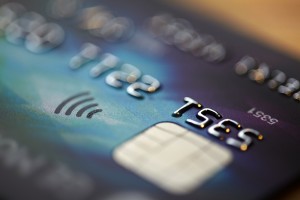 It’s finally here. It’s the EMV liability shift – which began this October – meaning liability for fraudulent card-present transactions will shift from credit and debit card issuers to merchants whose POS technology doesn’t accommodate transactions completed using cards embedded with microprocessor chips. You probably know that unlike magnetic stripe cards, so-called “chip cards” use a more secure means of authenticating transactions than their magnetic stripe counterparts and cannot be duplicated (“cloned”). But do you know how the EMV liability shift will impact restaurants? Let’s take a look.
It’s finally here. It’s the EMV liability shift – which began this October – meaning liability for fraudulent card-present transactions will shift from credit and debit card issuers to merchants whose POS technology doesn’t accommodate transactions completed using cards embedded with microprocessor chips. You probably know that unlike magnetic stripe cards, so-called “chip cards” use a more secure means of authenticating transactions than their magnetic stripe counterparts and cannot be duplicated (“cloned”). But do you know how the EMV liability shift will impact restaurants? Let’s take a look.
The EMV liability shift will have a negative financial impact on restaurants that don’t adapt from a technology standpoint.
There’s no mandate that restaurants—or any merchants—deploy EMV-compliant equipment in keeping with the EMV liability shift. However, opting against doing so puts restaurants at risk of significant financial hardship in the form of chargebacks and possible fines imposed by issuers. The expenditures incurred from assuming responsibility for card-present fraud may be sufficient to put small restaurants out of business.
Opting out of upgrading point of sale technology as the EMV liability shift approaches may also compel restaurants to sacrifice other “perks.”
Here’s one key perk: Beginning on the EMV liability shift date, MasterCard will exempt merchants from 100 percent of account data compromise penalties—as long as a minimum of 95 percent of MasterCard transactions that originate in their stores are completed on EMV-compliant point of sale equipment.
Technology changes made by restaurants in keeping with the EMV liability shift go beyond deploying point of sale equipment that can handle chip card transactions.
If you’re implementing new point of sale technology in preparation for the EMV liability shift, you will, of course, need to make certain your POS terminals are certified as EMV-compliant. You’ll need to ask your point of sale vendor or reseller about that—and determine what to do if EMV compliance isn’t the case. But there’s more to this than meets the eye. You’ll also need to obtain, through your acquiring bank, point of sale software certification from Visa, MasterCard, Discover, and/or American Express—depending, of course, on which card(s) are accepted in your establishment(s).
Additionally, going with the EMV liability shift “flow” by rolling out new point of sale technology may be a bit more difficult for restaurants than for retail stores. Why? There are two types of chip-enabled cards—chip-and-signature and chip-and-PIN. With chip-and-signature cards, validation occurs through a combination of the chip and the customer’s signature. In a chip-and-PIN scenario, authorization happens via a reading of the chip and the customer’s entry of his or her PIN on a PIN pad.
Issuers decide whether to distribute chip-and-signature cards or chip-and-PIN cards to their particular cardholders. However, many restaurants—unlike stores—have never implemented PIN pads. To maximize their chance for compliance under the EMV liability shift, they’ll need to install PIN pads at the checkout counter or acquire pay-at-the-table technology that incorporates such peripherals.
Restaurants that aren’t EMV-compliant will be a bigger target for fraudsters once the EMV liability shift takes hold.
Restaurants that don’t adapt their technology toolboxes in anticipation of the EMV liability shift may also suffer the consequences of a “trickle-down effect.” Perpetrators who try to commit credit and debit card fraud against restaurants, only to find their efforts thwarted because those restaurants have become EMV-compliant, will reach for the lower-hanging fruit—in other words, restaurants that have yet to make any changes in keeping with the EMV liability shift.
There’s no stopping the EMV liability shift—and ignoring its implications is a bad idea for restaurants. So if you haven’t already done so, consult your point of sale vendor or reseller to get with the compliance “program.” You more than likely won’t regret it.






